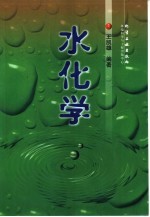
第一章 结论(Introduction) 1
1.1 水化学的意义(The significance of water chemjstry) 1
1.1.1 水的含义(The meaning of water) 1
1.1.2 水化学的基本内容(The basic content of water chemistry) 1
1.1.3 水化学的意义(The significance of water chemistry) 3
1.2 水的性质(The properties of water) 5
1.2.1 水的性质及其意义(The properties of water and their significances) 5
1.2.2 水的异常特性与水分子结构的关系(The relstionship between unusual properties and the molecular structure of water) 6
1.3 天然水(Natural waters) 9
1.3.1 地球上水的分布(The distribution of water in the earth) 9
1.3.2 天然水的依数性(Colligative properties of natural water) 11
1.3.3 海水(Sea water) 13
1.3.4 雨雪水(Rain and snow water) 15
1.3.5 地表水和地下水(Surface water and ground water) 15
1.4 污水(Waste waters) 16
习题 19
第2章 化学动力学(Chemical Kinetics) 21
2.1 反应速率(Reaction rate) 22
2.2 反应机理(Reaction mechaniarn) 29
2.3 阿仑尼乌斯定理(Anhenius law) 31
2.4 催化作用(Catalysis) 34
2.4.1 催化作用概述(Introduction of catalysis) 34
2.4.2 催化作用应用实例(Application examples of catalysis) 36
2.4.3 沸石(Zeolite) 41
2.5 经验速率方程(Empirical rate law) 43
2.5.1 有机物生物氧化降解反应的经验速率方程(The empircal rate equation for BOD) 43
2.5.2 细菌增殖的经验速率方程(The empirical rate equation for microbial growth) 46
习题 47
第3章 化学平衡(Chemical Equilibrium) 51
3.1 化学平衡的动力学本质(The dynamic nature of chemical equilibrium) 51
3.2 热力学基础(The thermodynamic basis) 52
3.2.1 利用吉布斯自由能判别反应方向(Determine reaction direction by Gibbs free energy) 53
3.2.2 范特荷夫公式(Van′t Hoff equation) 58
3.3 水溶液中离子和分子的非理想行为(Nonideal behavior of ions and molecules in solution) 60
3.3.1 离子的非理想行为(Nonideal behavior of ions) 60
3.3.2 分子的非理想行为(Nonideal behavior of molecules) 66
3.4 化学平衡计算(Chemical equilibrium calculation) 67
习题 70
第4章 酸碱化学(Acid-Base Chemistry) 75
4.1 酸碱化学基础(The basis of acid-base chemistry) 75
4.2 平衡计算(Equilibrium calculation) 78
4.2.1 质子转移关系式(Proton condition) 78
4.2.2 酸碱平衡计算实例(Examples of acid-base equilibrium calculation) 80
4.3 pc~pH图和ɑ~pH图(pc~pH diagrams and ɑ~pH diagrams) 83
4.3.1 一元酸-共轭碱体系的pc~pH图(The pc~pH diagrams of monoprotic acid-conjugate base systems) 83
4.3.2 多元酸-共轭碱体系的pc~pH图(The pc~pH diagrams of polyprotic acid-conjugate base systems) 87
4.3.3 ɑ~pH图(ɑ~pH diagrams) 92
4.4 pH缓冲溶液和缓冲强度(pH buffers and buffer intensity) 98
4.4.1 pH缓冲溶液(pH buffers) 98
4.4.2 缓冲强度(Buffer intensity) 99
4.5 碳酸盐系统(The carbonate system) 104
4.5.1 碳酸盐系统的平衡关系(Equilibria in the carbonate system) 104
4.5.2 碳酸盐物种浓度的计算(Calculation of carbonate species concentrations) 106
4.5.3 碱度和酸度(Alkalinity and acidity) 111
4.6 酸碱化学在水处理中的应用(Water treatment applications of acid-base chemistry) 122
4.7 全球碳循环(Global carbon cycle) 126
4.7.1 概述(Introduction) 126
4.7.2 大气CO2含量(CO2 concentration in the atmosphere) 128
4.7.3 陆地生态系统反馈(Feedback of terrestrial ecology) 130
4.7.4 海洋反馈(Oceanic feedback) 131
4.7.5 固碳对策与研究展望(Ways of carbon fixation and future carbon cycle study) 132
习题 133
第5章 配位化学(Coordination Chemistry) 136
5.1 配位化学基础(The basis of coordination chemistry) 136
5.1.1 基本术语(Basic temns) 136
5.1.2 配合物化学键理论(Chemical bond theory of complexes) 139
5.1.3 配合物的稳定性(Complex stability) 142
5.1.4 反应速率(Reaction rate) 145
5.2 平衡计算(Equilibrium calculation) 146
5.3 金属(Metals) 153
5.3.1 铜在水与废水中的行为(The bebaviour of copper in water and wastewater) 153
5.3.2 金属的形态分析(Species analysis of metals) 155
5.3.3 金属离子的水解--以H2O和OH-为配位体(Hydrolysis of metal ions--H2O and OH- as ligands) 158
5.3.4 无机离分子絮凝剂(Inorganic polymer flocculatarts) 161
5.4 腐殖质(Hurnic substances) 164
5.4.1 腐殖质成分、性质与结构(Characteristics of humic substances) 164
5.4.2 腐殖质与金属离子的螯合(Chelation between humic substances and metals) 167
5.4.3 富里酸与胡敏酸的分离技术(Isolation of fulvic acid and humic acid) 168
习题 171
第6章 氧化还原化学(Oxidation and Reduction Chemistry) 174
6.1 氧化还原化学基础(The basis of oxidation and reduction chernistry) 174
6.1.1 氧化还原反应的化学计量关系(Redox stoichiometry) 175
6.1.2 氧化还原平衡(Redox equilibrium) 177
6.2 氧化还原平衡的图解表示(Graphical representation of redox equilibrium) 194
6.2.1 pc~pε图(pc~pεdiagrams) 194
6.2.2 pε~pH图(pε~pH diagrams) 197
6.2.3 有固体存在时的pε~pH图(The pε~pH diagram incorporating solids) 201
6.2.4 天然水的pε值,决定电位(The pεvalue of natural water,determining potential) 208
6.3 电化学腐蚀(Electrochemical cotrosion) 214
6.3.1 腐蚀电池(Corrosion cell) 214
6.3.2 浓差电池(Concentration cell) 216
6.3.3 腐蚀的控制(Corrosion control) 218
6.4 铁化学(Iron chemistry) 221
6.4.1 天然水中铁的来源和存在状态(The sources and status of iron in natural water) 222
6.4.2 地下水中的铁(Iron in groundwaters) 226
6.4.3 酸性矿排水(Acid mine drainage) 229
6.5 氯化学(Chlorine chemistry+) 231
6.5.1 概述(Introduction) 231
6.5.2 折点氯化(Breakpoint chlorination) 233
6.5.3 氯与有机物反应形成的有害副产物(The hazardous by-products of chlorine reactions with organic substances) 234
6.6 氮化学(Nitrogen chemistry) 236
6.6.1 氮循环(The nitrogen cycle) 236
6.6.2 水中含氮物种的氧化还原转化(Redox transformation of nitrogen species in water) 239
6.6.3 氮的微生物转化(Microbial transformation of nitrogen) 242
6.7 高级氧化过程(Advanced oxidation processes,简称AOPs) 248
6.7.1 概述(Introduction) 248
6.7.2 臭氧高级氧化技术(Ozonation technology) 250
习题 254
第7章 相间作用(Phase Interactions) 257
7.1 表面张力与表面自由能(Surface tension and surface free energy) 257
7.2 气体在不中的溶解与挥发(Dissolution and volatilization of gases in water) 259
7.2.1 亨利定律(Henry s Law) 259
7.2.2 气体在水中的溶解速率(Dissolution rate of gases in water) 261
7.2.3 溶解氧(Dissolved Oxygen) 262
7.3 固体的沉淀与溶解(Precipitation and dissolution of solids) 263
7.3.1 沉淀与溶解动力学(Precipitation and dissolution kinetics) 264
7.3.2 沉淀与溶解的平衡计算(Equilibrium calculation of precipitstion and dissolution) 265
7.3.3 碳酸钙的溶解度与水质稳定性(Calcium carbonate solubility and water stabiliy) 272
7.3.4 磷酸盐化学(Phoshate chemistry) 281
7.4 固体表现吸附(Adsorption of solids) 288
7.4.1 吸附量与吸附等温线(Adsorption amount and adsorption isotherms) 288
7.4.2 吸附速率与吸附活化能(Adsorption velocity and activation energy) 290
7.4.3 吸附行为举例(Examples of adsorption behaviour) 292
7.5 沉积物(Sedimemts) 294
7.5.1 沉积物的形成(Formation of sediments) 294
7.5.2 胶体微料的聚沉(Aggregation of colloidal particles) 295
7.5.3 絮凝动力学(Flocculation kinetics) 299
7.5.4 水体底泥中微量金属分析的分段提取技术及其应用(Sequential extraction technique for trace metals analyses in aquatic sediments and its application) 302
7.5.5 洪水对河流底泥有机污染物分布的影响(Impact of flood on distribution of organic pollutarts in river sediment) 307
7.6 膜化学(Film and membrane chemistry) 313
7.6.1 界面膜(Interfacial film) 313
7.6.2 膜分离(Membrane separation) 315
习题 321
附录 324
附录1 地表水环境质量标准 324
附录2 地下水质量标准 326
附录3 海水水质标准 328
附录4 生活饮用水卫生标准 330
附录5 景观娱乐用水水质标准 331
附录6 农田灌溉水质标准 332
附录7 渔业水质标准 334
附录8 饮用天然矿泉水标准 335
附录9 污水综合排放标准 336
主要参考文献 339
- 《分析化学》陈怀侠主编 2019
- 《化学反应工程》许志美主编 2019
- 《危险化学品经营单位主要负责人和安全生产管理人员安全培训教材》李隆庭,徐一星主编 2012
- 《奶制品化学及生物化学》(爱尔兰)福克斯(FoxP.F.)等 2019
- 《有机化学实验》雷文 2015
- 《全国普通高等中医药院校药学类专业十三五规划教材 第二轮规划教材 分析化学实验 第2版》池玉梅 2018
- 《生物化学》田余祥主编 2020
- 《长江口物理、化学与生态环境调查图集》于非 2019
- 《化学工程与工艺专业实验指导》郭跃萍主编 2019
- 《天然药物化学》孔令义主编 2019
- 《市政工程基础》杨岚编著 2009
- 《家畜百宝 猪、牛、羊、鸡的综合利用》山西省商业厅组织技术处编著 1959
- 《《道德经》200句》崇贤书院编著 2018
- 《高级英语阅读与听说教程》刘秀梅编著 2019
- 《计算机网络与通信基础》谢雨飞,田启川编著 2019
- 《看图自学吉他弹唱教程》陈飞编著 2019
- 《法语词汇认知联想记忆法》刘莲编著 2020
- 《培智学校义务教育实验教科书教师教学用书 生活适应 二年级 上》人民教育出版社,课程教材研究所,特殊教育课程教材研究中心编著 2019
- 《国家社科基金项目申报规范 技巧与案例 第3版 2020》文传浩,夏宇编著 2019
- 《流体力学》张扬军,彭杰,诸葛伟林编著 2019
